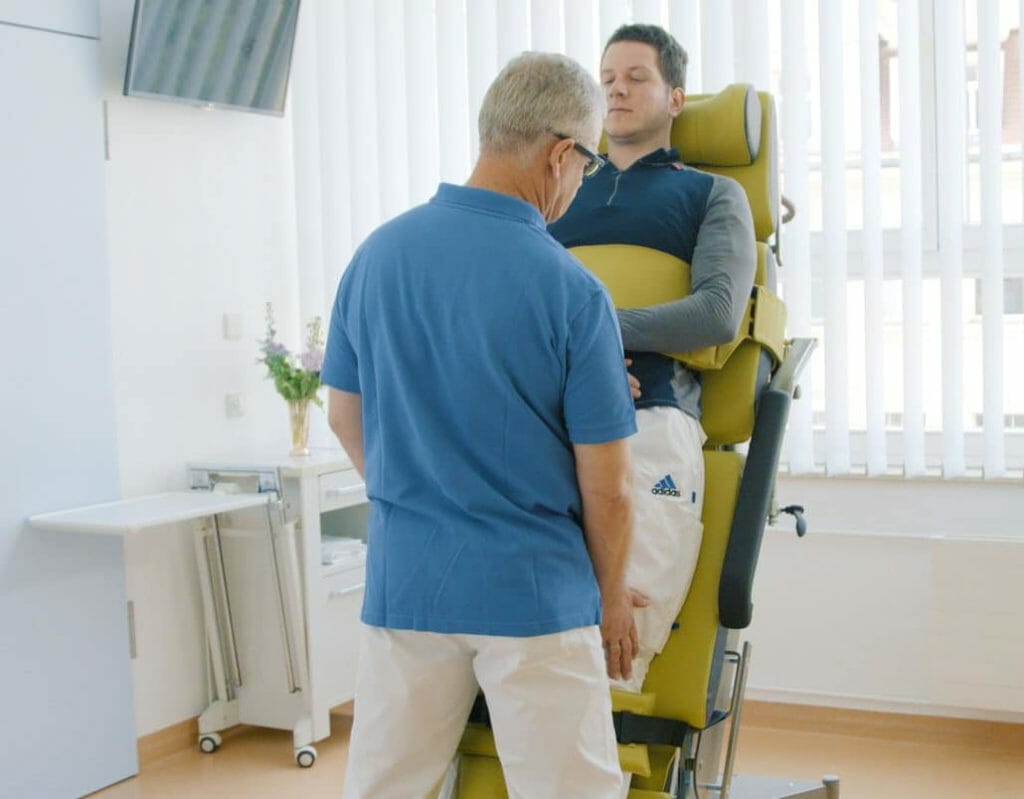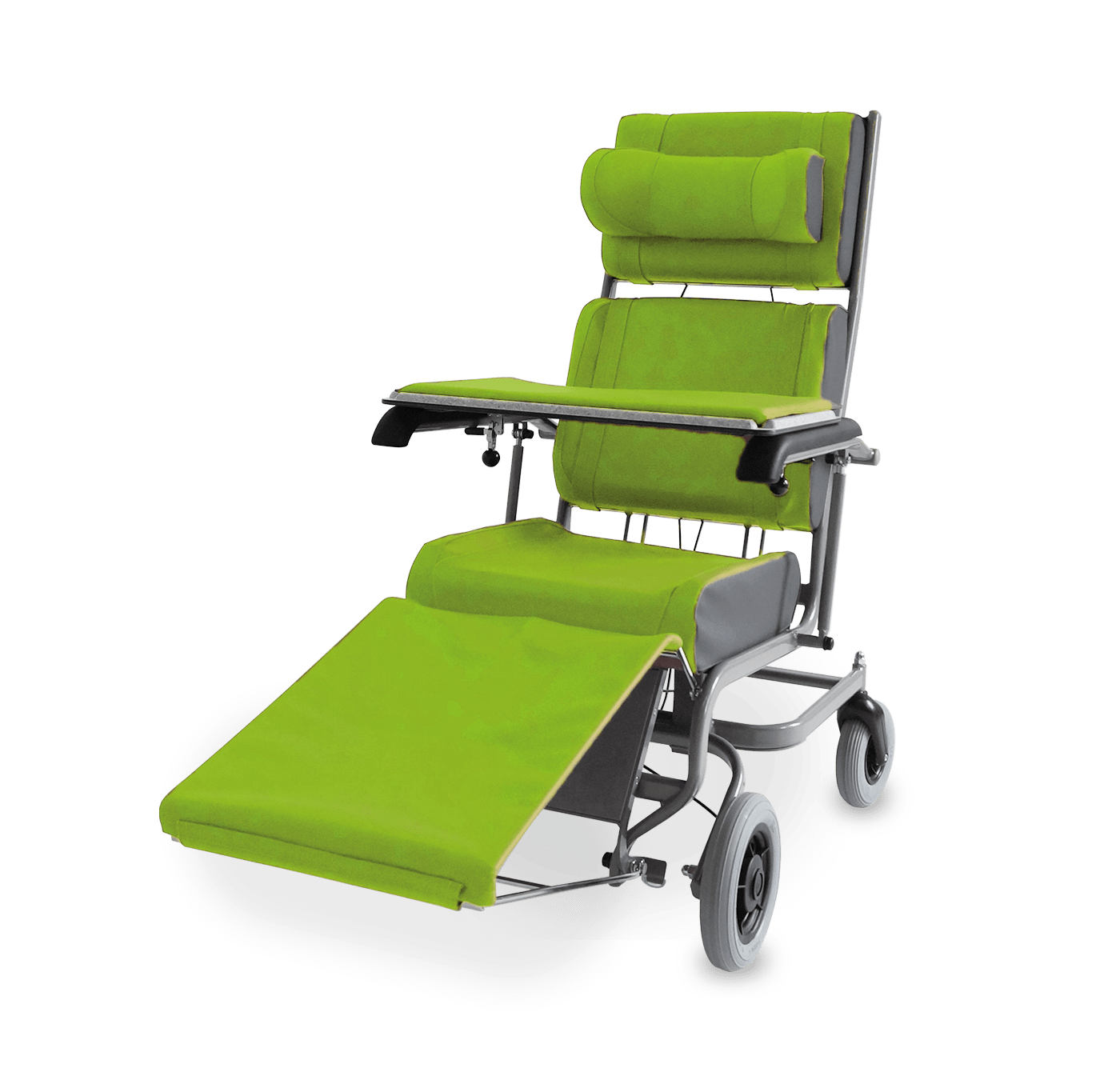
Early mobilisation in the intensive care unit in severely affected patients with COVID-19
In general, studies show that acute respiratory distress syndrome (ARDS) has a massive physical and psychological impact on the long-term outcome of patients with the disease. Functional limitations such as reduced walking distance and increased incidence of depression, anxiety and post-traumatic stress disorder are noted. A permanent cognitive deficit is often the consequence [4].
In the acute stage, the incidence of delirium is significantly increased. Delirium is a neuropsychiatric syndrome with acute confusion, which in itself is a life-threatening condition with significantly increased mortality [5], [6]. Furthermore, ARDS is one of the three crucial risk factors (sepsis and multiorgandysfunction) [7] for the development of ICUAW (intensive care unit acquired weekness), a neuromuscular organ failure. Muscle weakness up to plegia and a high mortality [6] are the consequences.
Avoiding complications through early mobilisation
It is precisely these complications that early mobilisation with its evidence-based effects can have a positive influence on [6], [7], [8]. This is most clearly shown in the long-term outcome through functional independence in the sense of an independent life [9]. The length of stay in intensive care can also be reduced by early mobilisation [10]. Especially nowadays, when intensive care beds and skilled personnel are a scarce resource, early mobilisation should therefore not be neglected.
In practice, this means that patients with pronounced oxygenation disturbance (possibly also with extracorporeal membrane oxygenation, ECMO) are regularly placed in the prone position for 16-24h to recruit the dorso-basal sections [3]. If the patients are turned back and beginning to be able to make contact, early mobilisation is started after systematic evaluation in the interdisciplinary team and if no contraindications or exclusion criteria for early mobilisation have been determined. After activation of the cardiovascular system adapted to the situation, assisted mobilisation to the sitting position begins.
Assistance with the Mobilizer® Medior
Mobilisation into the sitting and standing position is possible with the Mobilizer® when the patient’s cardiopulmonary resources are low. After the transfer with the rollboard to the Mobilizer® Medior, the patient can be raised gently and without further effort. Once the patient is positioned in this breath-easing position, he or she can be placed in a supportive position as needed. The upper limb can be positioned in a breath-easing position with the table attached to the armrests.
The vibration module
Often the patient’s vigilance improves during vibration therapy, thanks to the vibration module integrated in the Mobilizer® Medior. The first daily activities, such as independent facial care, promote self-activity. Even in the case of exudative consolidation, a sitting position offers good opportunities for secretolysis and expectoration.
Early mobilisation is in itself and under optimal circumstances a complex interdisciplinary team task. Even though much is demanded of us in this pandemic phase with high patient volumes and elaborate infection control measures, early mobilisation is a decisive building block in the recovery of patients for their successful return to independent living!
Sources:
- Bein T, Bischoff M, Brückner U et al. (2015). S2e guideline: “Positioning therapy and early mobilisation for prophylaxis or therapy of pulmonary dysfunction”, German Society for Anaesthesiology and Intensive Care Medicine (DGAI).
-
Word Health Organisation, (2020) Coronavirus disease 2019 (COVID- 19) Situation 46.
Krenek B, Mayerhofer S, Nessizius S, (2020) - Guideline for physiotherapy in COVID-19.
Sensen B, Braune S, de Heer G, Bein T, Kluge S. (2017) Life after ARDS. -
Hsieh SJ, Soto GJ, Hope AA, Ponea A, Gong MN. (2015) The association between acute respiratory distress syndrome, delirium, and in-hospital mortality in intensive care unit patients.
-
Nessizius S, Rottensteiner C, Nydahl P (2017). Early rehabilitation in intensive care – interprofessional management, pp. 90-174.
-
Senger, Frank Joachim Erbguth, (2017) Critical-illness myopathy and polyneuropathy.
- Ponfick M, BöslK, Lüdemann-Podubecka J, Neumann G, Pohl M, Nowak D, Gdynia H.-J. (2014) Acquired muscle weakness of the critically ill patient.
-
Schweickert WD, Pohlman MC, Pohlman AS et al (2009).
- Early physical and occupational therapy in mechanically ventilated, critically ill patients: a randomised controlled trial.
- Morris PE, Goad A, Thompson C et al (2008). Early intensive care unit mobility therapy in the treatment of acute respiratory failure.
Further literature:
- Physiotherapy management for COVID 19 in the acute hospital, Thomas et al (2020)
- Physiotherapy in Patients With COVID-19, Physio Germany (2020)



